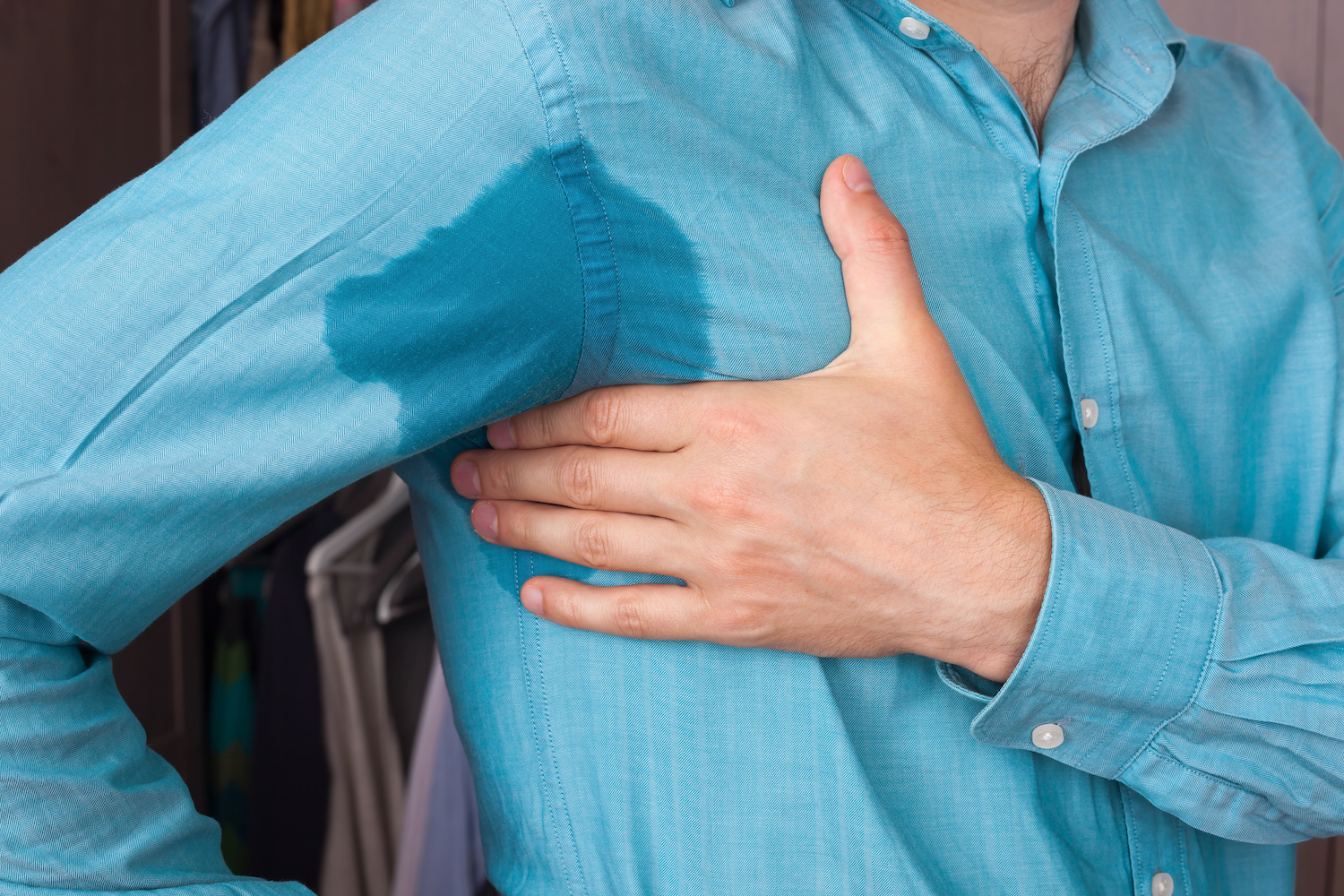 Imagine you’re being interviewed for your dream job. Your resume is impressive, your interview outfit is on point, and you have a great rapport with your interviewer. Everything is going as well as it possibly can–that is, until your hyperhidrosis kicks in.
Imagine you’re being interviewed for your dream job. Your resume is impressive, your interview outfit is on point, and you have a great rapport with your interviewer. Everything is going as well as it possibly can–that is, until your hyperhidrosis kicks in.
“Hyperhidrosis is excessive sweating affecting areas such as under the arms, on the palms of the hands, and on the soles of the feet,” shares Dr. Melanie Pickett, board-certified dermatologist at Sanova Dermatology in Austin, Texas. It can make it impossible to avoid needing to furtively wipe your hands on your pants or focus on anything but the enlarging damp circles under your arms. In the job interview scenario, as you get up to leave, you realize that as well as the interview has gone, your interviewer’s last impression of you will be your damp handshake or the sweat stains under your arms.
The “flop sweat” scene in the movie Broadcast News is a great visual of the damaging effect excessive sweating can have. Aaron, played by Albert Brooks, finally gets his shot to be a news anchor. His dreams are derailed as his face begins to sweat profusely on air while his friends and colleagues watch in dismay.
“Primary hyperhidrosis, or excessive sweating, is a problem that affects many people,” states Dr. Pickett. “An estimated 5% of the population,” she reveals. Though excessive sweating can occur with certain medical conditions, primary hyperhidrosis occurs in the absence of a related medical problem. Excessive sweating can be embarrassing and unsightly, and it can negatively impact social interactions and diminish self-confidence.
The good news is, there are many effective treatments for primary hyperhidrosis. A first-line treatment for excessive sweating is an antiperspirant containing aluminum chloride salts. This treatment can be very helpful but can be less ideal in areas where the skin is thicker, such as in palmar hyperhidrosis, or excessive sweating of the palms. The main side effect of aluminum chloride salts is skin irritation.
A newer treatment option gaining popularity to reduce or eliminate sweating is Botox (OnabotulinumtoxinA). Most people have heard of Botox for wrinkles; however, Botox has many medical uses as well, including for muscle spasms and migraine headaches. The FDA additionally approved Botox for the treatment of hyperhidrosis in 2004.
When injected into the sweat glands, Botox interrupts the signal that causes the glands to sweat. Using a very fine needle helps minimize pain, which is especially important for the sensitive nerve endings on the hands and feet. Nerve blocks and other methods to alleviate discomfort help make the treatment tolerable.
Despite the potential discomfort, Botox for excessive sweating is popular for one very important reason: the effects generally last for about six months to a year. That’s a long and welcome period of relief for the hyperhidrosis sufferer. According to Dr. Pickett, “Topical therapies can be helpful for hyperhidrosis but many patients wish to avoid the inconvenience of applying a medication multiple times a week. Botox can be a safe and effective treatment option for patients with primary hyperhidrosis who want a longer-lasting sweating solution.” You may consult experts like Orchidia Medical Group – Botox and ask them about the procedure.

